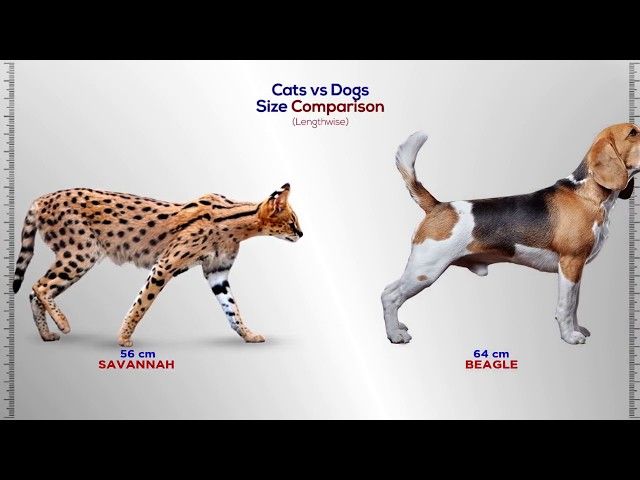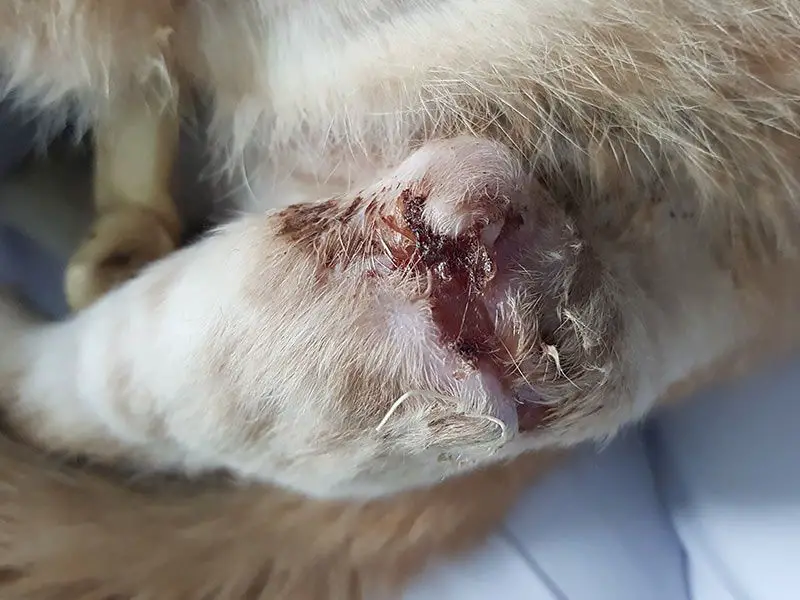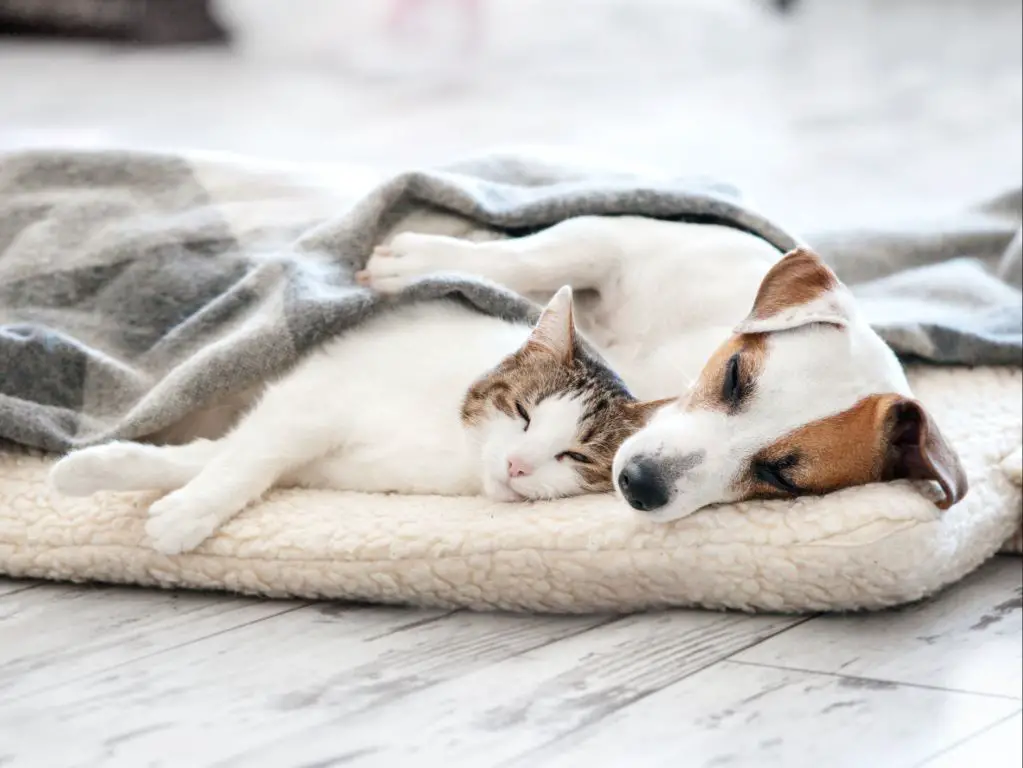Can a House Cat Defend Itself Against a Dog?
Cats and dogs have a long history of conflict. While they can sometimes get along, clashes between felines and canines are common. This leads to the question – can a domestic cat properly defend itself when facing off against a dog?
It’s a complex issue with many factors to consider. Size differences, natural weapons, agility, territoriality, and predatory instincts all play a role. The outcome often comes down to the specific circumstances of the encounter.
While not defenseless, cats face clear physical disadvantages against most dogs. With preparation and caution on the owner’s part, dangerous conflicts can often be avoided. When a dog attack does occur, a cat has several natural defenses it can employ in response.
Size Difference

Cats are generally much smaller than dogs. The average domestic cat weighs 8-10 pounds, while the average dog weighs anywhere from 20-100+ pounds depending on the breed. This considerable size difference gives most dogs a physical advantage over cats in a direct confrontation.
Even small dog breeds like chihuahuas and terriers will outweigh an average cat. Medium and large dogs like labs, retrievers, shepherds, and pit bulls often outweigh cats by 50+ pounds. The size disparity is so pronounced that it would be like a toddler fighting a full grown man.
Of course there are exceptions – some cats like Maine Coons can reach 25+ pounds, while tiny dogs like chihuahuas may only be 3-5 pounds. But in general, dogs have a sizable weight advantage over cats, which impacts their ability to physically overpower them.
Weapons
Cats and dogs possess different natural weapons that can be used for offense or defense in an altercation. Cats have retractable claws that can be quickly deployed to slash or cling onto an attacker. Their claws are sharp and curved, allowing cats to cause significant scratches and puncture wounds. Dogs also have claws, but they are blunt and designed more for traction than fighting.
Cats possess canine teeth designed for gripping prey and delivering a lethal bite. Their teeth can pierce deep into skin and muscle. Dogs have larger canine teeth that can crush bones and tear flesh. A dog’s bite generally inflicts more tissue damage than a cat’s bite. Both animals have additional teeth behind their canines suited for chewing and crushing food, which could theoretically be weaponized in a fight.
Overall, cats and dogs have different natural weapons designed for hunting prey and self-defense. Cats have sharp claws and precise biting abilities, while dogs have larger canines and a more powerful bite. Both species can inflict significant damage with their teeth and claws in an altercation.
Agility
Cats tend to be much more agile and flexible than dogs. With their smaller size and muscular, lean bodies, cats can perform impressive feats of coordination, balance, and gymnastic ability. They can leap to great heights, squeeze into tight spaces, make sharp turns and quick evasive maneuvers, and gracefully walk along narrow surfaces. Their superior sense of balance allows cats to land on their feet when falling from heights.
Dogs, on the other hand, rely more on their strength and power than finesse. While some breeds like terriers may be feisty and nimble, most dogs don’t have the lithe physiques of cats. Their larger size makes them less capable of the aerial acrobatics and feats of agility that cats can readily perform. When it comes to a confrontation with a cat, a dog’s relative lack of agility can put it at a disadvantage.

With their remarkable flexibility and dexterity, cats can swiftly dodge a dog’s attacks while maneuvering themselves into position for counter strikes. Their athleticism allows them to run circles around slower, clumsier canines. So in a fight between a cat and dog, the cat’s superior agility is often an ace up its sleeve.
Fight or Flight
When faced with a threat, cats and dogs tend to have different instinctual reactions. Cats are more likely to flee from an altercation, while dogs are more prone to stand their ground and fight. This comes down to differences in their natural temperaments and histories as predators and prey.
Cats are naturally cautious and conservative with their energy. Their instinct is to retreat from a direct confrontation, especially with a larger animal like a dog. Cats prefer to avoid injury since even a minor wound could impair their ability to hunt, which they rely on for survival. Unless cornered and unable to escape, cats will typically flee from an aggressive dog rather than risk harm.
In contrast, dogs have been selectively bred by humans to be more bold and protective. Many dog breeds have strong territorial instincts and will instinctively defend their space. Rather than run from a threat, dogs are more inclined to confront an intruder aggressively. Their larger size and social nature gives dogs a confidence boost to stand their ground rather than flee from an altercation.
So while a cat’s first response may be escape, a dog is more likely to meet aggression with equal or greater aggression. This fundamental difference in fight or flight response is important to understand when keeping cats and dogs in the same household.
Home Turf Advantage
Cats are extremely territorial animals and their familiar environment gives them an edge when it comes to defending themselves against dogs. A cat in its own home has the advantage of knowing the layout, having escape routes, and having established scent markers. These elements allow the cat to quickly evade or surprise attacking dogs.
When a dog enters a cat’s territory, the cat is more likely to stand its ground and fight rather than flee. Its confidence is boosted by the comfort of its surroundings. A 2016 study published in Applied Animal Behaviour Science found that cats are significantly more aggressive towards dogs when in their own home compared to neutral territory or the dog’s home. The cat’s attitude was noticeably bolder and fierce in its home environment.
In addition, cats tend to have vertical spaces and perches that they can access in the home, like cat trees, shelves, and furniture. This allows them to get above dogs and strike them from above or evade them by jumping to safety. The home’s layout with hiding spots and vertical spaces works to the cat’s advantage during a confrontation with a canine adversary.
Prey vs Predator
Cats and dogs have very different instincts that impact how they interact. Cats are natural hunters with predator instincts. Their ancestry traces back to wild cats that stalked and caught prey. This gives cats an innate reaction to flee when faced with danger. On the other hand, dogs evolved from wolves that relied on pack hunting and group living. Dogs have more of a pack mentality and may be inclined to confront a threat as a group rather than run away.
When a cat encounters an unfamiliar dog, its predator instinct kicks in and it likely sees the dog as a threat. The cat’s first reaction is often to escape rather than stand its ground. However, cornered cats can lash out to defend themselves. Dogs that chase cats trigger this defensive response. Their pack mentality makes some dogs prone to chasing cats as a group activity. Cats view this as life-threatening and react accordingly to protect themselves.
Understanding the difference between predator and pack mentalities helps explain why cats often run from dogs and may attack only when cornered. It also underscores the need to properly introduce cats and dogs to avoid situations that trigger their instincts. With proper precautions, these natural adversaries can learn to coexist peacefully.
Injuries
In a fight between a cat and a dog, both animals risk potential injuries. However, the types of injuries may differ based on the size and abilities of each animal.
For a cat, the most common injuries often involve puncture wounds from a dog’s teeth. A dog’s bite contains strong jaws and sharp teeth that can easily pierce a cat’s skin, resulting in deep puncture wounds. These bites often occur on a cat’s legs, head, or body as these areas are most vulnerable during an attack.

Cats may also suffer from scratches, torn ears, eye injuries, and broken bones if knocked down. Small cats are especially prone to bone fractures and crushing internal injuries if a large dog is able to pin them down.
For dogs, the most frequent injuries from a cat are claw wounds. Cats have sharp, hooked claws that can swipe and rake a dog’s snout, eyes, ears, and other body parts. A cat’s claws can cause scratches, cuts, and may even damage a dog’s eyes or ears in an altercation.
Dogs may also endure bites on the snout, legs or tail from a cat. While a dog’s thick fur protects it from some injury, a cornered cat can inflict significant bite wounds on exposed areas. In rare cases, very small dogs may potentially have their trachea crushed if a cat is able to grasp the throat in defense.
Overall, both cats and dogs can inflict serious damage in a fight. Preventing conflicts through proper training, supervision, and controlled interactions is key to keeping both pets safe and unharmed.
Prevention
There are several things you can do to prevent fights between cats and dogs in the same household:

-
Proper introductions – When bringing a new pet into the home, take things slowly and give them time to adjust to each other’s smells and presence before allowing full interaction.
-
Separate spaces – Ensure each pet has their own safe space like a crate or room they can retreat to. Cats especially need vertical escape routes.
-
Don’t leave unattended – Do not leave dogs and cats unsupervised until you are certain they get along. This prevents opportunities for fights.
-
Control resources – Feed pets separately, pick up toys, and ensure access to resources like food, beds, and litter is not contentious.
-
Train the dog – Teach dogs commands like “leave it” and reinforce not chasing the cat. Reward calm, polite behavior around the cat.
-
Trim nails – Blunt nails of both species helps prevent severe injuries if minor scuffles do occur.
-
Pheromone products – Cat/dog appeasing pheromones help reduce stress and anxiety when living closely together.
-
Exercise – Giving your dog adequate physical and mental exercise will leave them calmer and less likely to focus negative energy on the cat.
With proper training, supervision, and management fights can be avoided. But personalities between individual pets also factor in. Some dogs and cats will never become friends, so separation is key.
Conclusion
In conclusion, domestic cats are well equipped to defend themselves against dogs should an altercation arise. While a size difference often exists between cats and dogs, cats have a number of advantages on their side. Their agility, razor-sharp claws, ability to run fast and climb trees, and tendency to fight back ferociously when cornered give cats ample ability to either escape, inflict damage, or defend themselves capably in a dispute.
However, any fighting between household pets should be avoided. Responsible pet owners should take precautions to prevent their cats and dogs from fighting. This includes proper introductions, separation when unsupervised, and creating an environment where both animals feel safe and secure. With proper care and management, cats and dogs can coexist peacefully. But when conflicts do occur, cats can hold their own and are not defenseless against their canine counterparts. Their speed, dexterity and arsenal of weapons enable cats to emerge from disputes relatively unscathed.